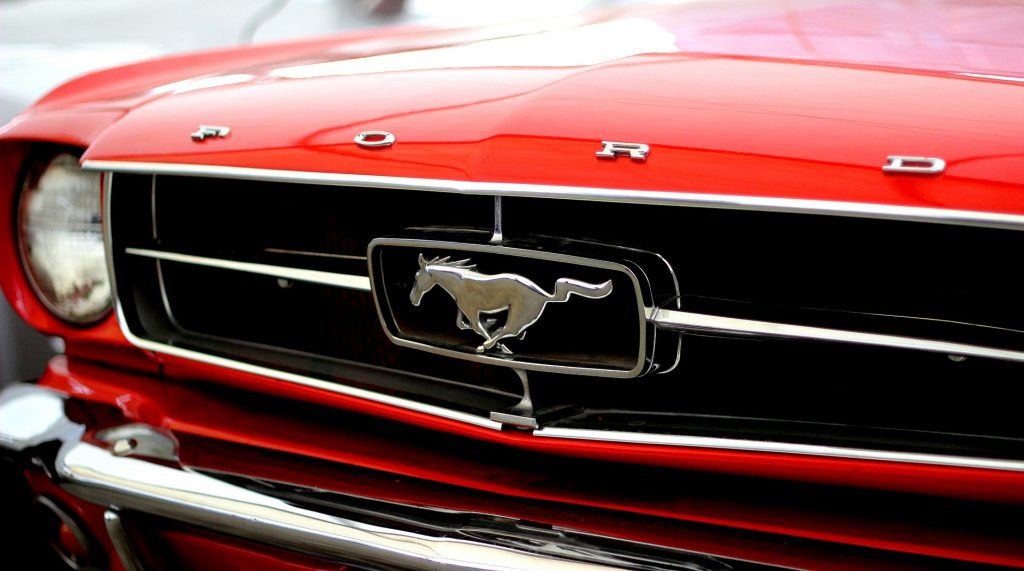Owning a Ford Mustang is a goal for so many people. It’s a beloved model dating back to its original reveal in the 1960s, and there’s a good reason why this particular make has stayed in the public eye for so long.
Having sold over 10 million models and remaining immune to the overall decline in sports coupe and convertible sales in the UK, this tried-and-true classic car just keeps driving on.
We’re joined by used Ford Mustang dealership, Lookers Ford, as we explore just how the car has developed and adapted through the years.
The first Mustang
In 1962, the original concept for the Ford Mustang was revealed. Back then, it resembled a rocket ship more than a car thanks to its aerodynamic flair, but still showcased many of the Mustang’s distinctive features. It was pitched by the then-general manager of Ford, Lee Iacocca, as a fun-to-drive compact car. The mid-engine two-seater roadster earned its name in reference to the P-51 Mustang fighter plane from the Second World War. However, Iacocca wasn’t entirely happy with the original design and quickly set about redesigning his idea.
Change through the 1960s
In the sixties, Ford designers pitched the Ford Falcon to Iacocca, a new model with a high-mounted grill and a long-sweeping hood. The two cars were identical in overall length, but the Mustang’s wheelbase was shorter. The inside of the vehicles was considerably different, however, with the Mustang offering lower positioned seats and a lower ride height. 9th March 1964 saw the first Mustang roll off an assembly line in Michigan, a month before it made its world debut. By 1965, car customizing company, Shelby American, entered the fray, producing a higher-powered version of the popular mobile.
1974-1978: The Second Generation Mustang
To fight back against American imports, the new Ford Mustang was modelled on the Ford Pinto. To differentiate from the pony cars of yesteryear, the Mustang II offered a longer Hatchback model. It also marked the – albeit short – end of the Mustang Convertible, with no Second Generation Mustangs coming with the option of driving with your roof down.
This version didn’t have an option for the V8 engine that had previously been seen. However, this didn’t last long and by 1975, the Mustang was slightly redesigned to re-debut the engine. Due to declining numbers, Ford introduced special-edition Second Generation Mustangs such as the Cobra II in a bid to keep the car current.
This era wasn’t very popular for Ford. The oil crisis and emission acts loomed large, and the company could have quite easily watched the Mustang follow in Fairlane’s footsteps and not last over a decade on the assembly line. To try to avoid this, the Third Generation was unveiled.

1979 – 1993: The Third Generation
Luckily, the Third-Generation was much more successful. It was sleek and redesigned as the first Mustang to be built on the new Fox platform. The ’79 version was lighter than its predecessor, despite being longer and taller, and was more European visually than ever before. In 1980, Ford tried to make the engine more economical and sporty by dropping the 302-cubic litre V8 engine to a 255-cubic inch V8 engine.
The convertible option returned in 1983, along with the V8 engine having its power ramped up to 175hp. To mark its 20th anniversary, 4,058 Mustang SVOs were produced, but its high price tag ruled out many potential buyers. For the five years that followed, the engine kept being altered to try to offer a more environmentally-friendly product. Then, in 1989, all Mustangs featured a new mass air system and all vehicles produced for the 365 days from April 17th 1989 included the words ‘25 years’ on the dashboard to mark its 25th anniversary.
When sales started to slow in 1993, a new version was set in the works…
1994 – 2004: The Fourth Generation
After 30 years passed since the First Generation, the Fourth Generation appeared. Ford reported that 1,330 parts from the vehicle’s 1,850 total had been entirely changed. 1995 saw the last 5.0L V8 engine used in the car, with 4.6L engines taking over.
The 1999 version saw another swathe of changes, but it wasn’t classed as a new generation. That came about when Ford’s Dearborn Assembly Plant – where the first Mustang was produced – ceased production. It is thought that 6.7 million of the 8.3 million Mustangs ever produced at that time was created at Dearborn.
2005 – 2014: The Fifth Generation
It wasn’t until 2005 that the official new generation was revealed. Ford introduced the all-new D2C Mustang platform in 2005 which, in the company’s words, was ‘designed to make the Mustang faster, safe, more agile and better looking than ever’. 2007 saw the first Shelby model be released in 35 years, in what was marked as the most powerful Mustang up to that point thanks to its 5.4L V8 engine. By 2009, there was the option to purchase a model with a glass top roof, as well as special 45th anniversary badging.
2015 – present: The Sixth Generation
The latest generation saw some radical changes. For the first time in 50 years, the model ditched its live axle suspension, opting for an independent rear suspension instead. The new 2.3L EcoBoost 4-cylinder engine was also introduced, offering better fuel economy and a more environmentally-conscious way in which to get around quickly while not faltering on style.
The now-expected horsepower increases also took place. The changes this year, however, went a little deeper. Ford’s efforts to elevate the pony car to new heights are clear, but they’ve also bolstered its environmental and social credentials — a feat worth celebrating. The model released in 2018 offers even more advanced technology, including a 12-inch, all-digital, customizable instrument cluster and a host of new derive-assistance features such as pre-collision assist. There’s also a ‘love thy neighbour’ mode in which the vehicle can be programmed to automatically limit the noise output from the exhaust at pre-programmed times of the day.
It is predicted that the next generation will appear in 2024. What changes are you hoping to see for the Ford Mustang?
Sources: https://www.torquenews.com/106/12-ways-ford-mustang-uk-differs-mustang-usa https://www.just-auto.com/analysis/why-the-ford-mustang-is-so-successful-the-world-over_id177361.aspx https://www.cbsnews.com/pictures/ford-mustang-through-the-years/2/ https://www.roadandtrack.com/car-culture/classic-cars/videos/a25960/1962-ford-mustang-i-concept/ https://www.thoughtco.com/generations-of-the-ford-mustang-2465071 https://www.kentwoodford.com/evolution-of-the-ford-mustang/ https://www.digitaltrends.com/cars/2018-mustang-gt-merges-brains-with-brawn/










